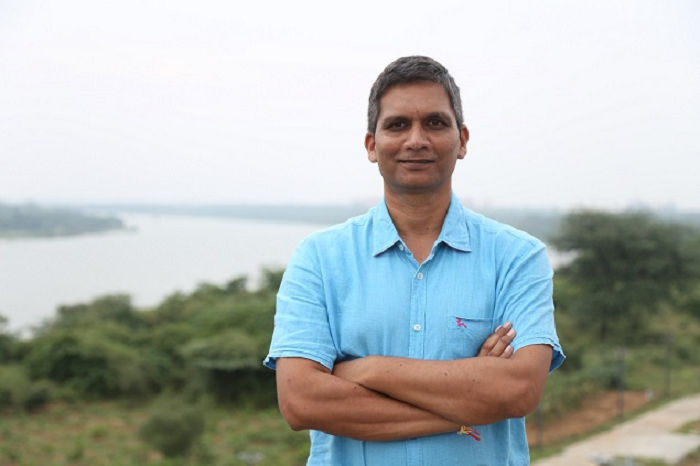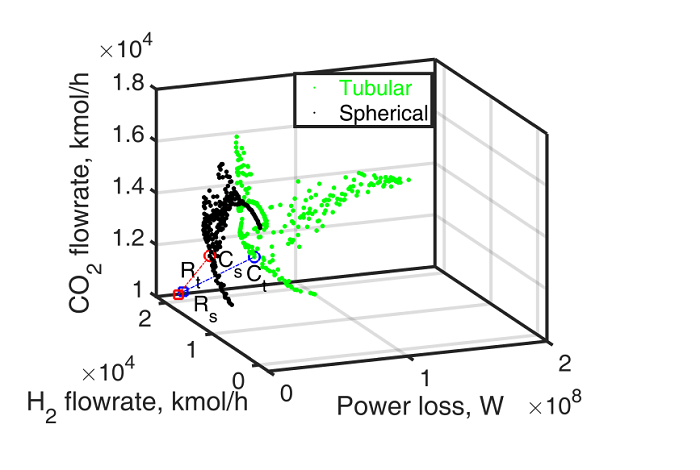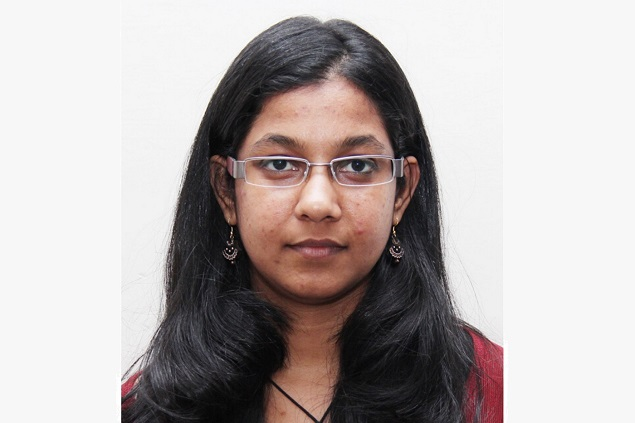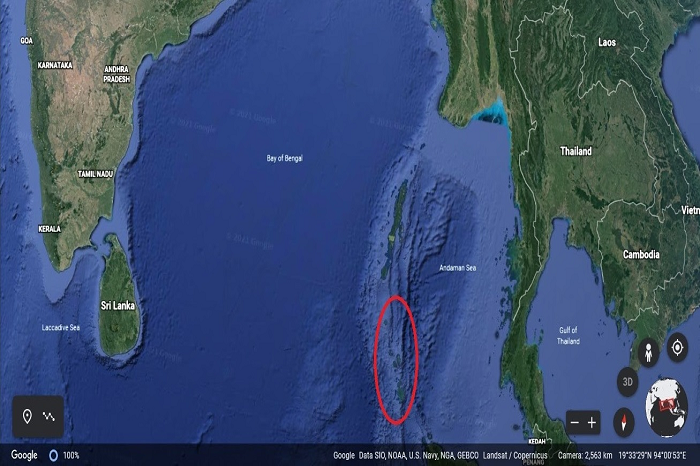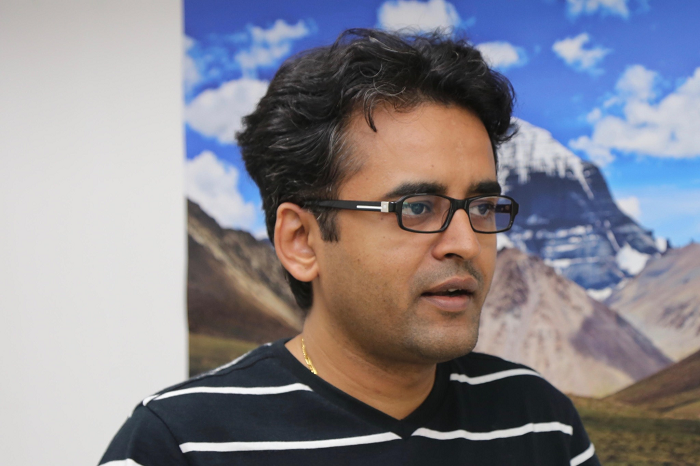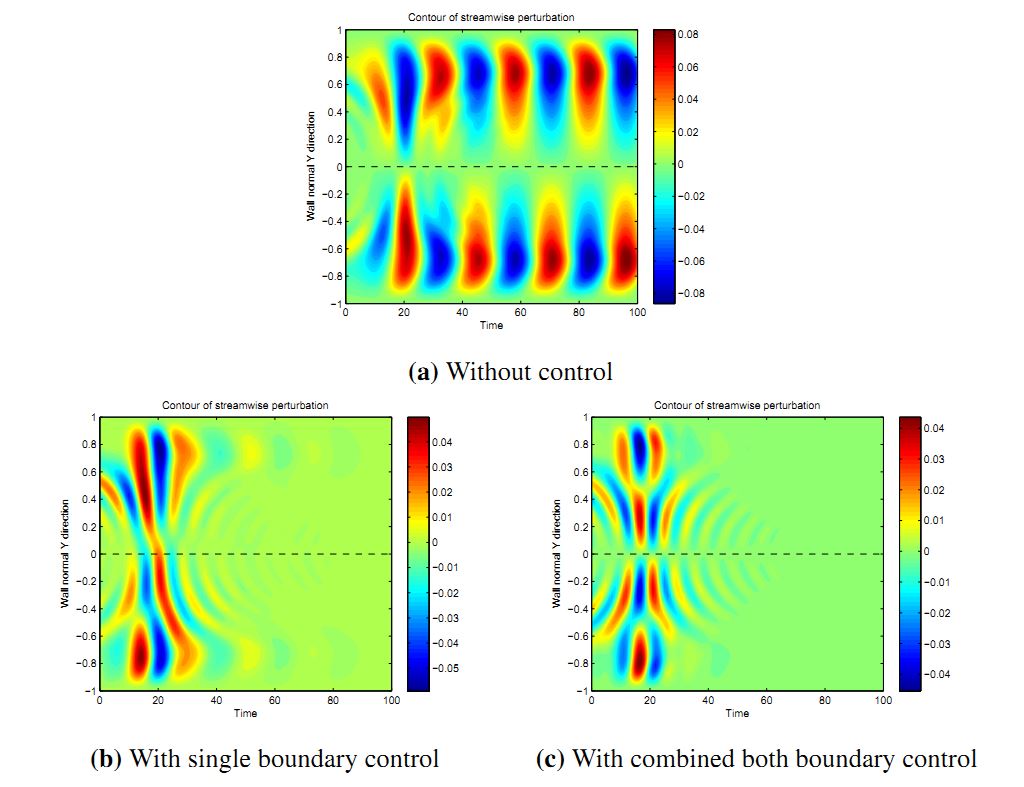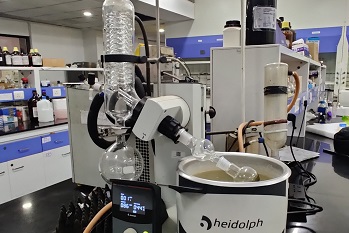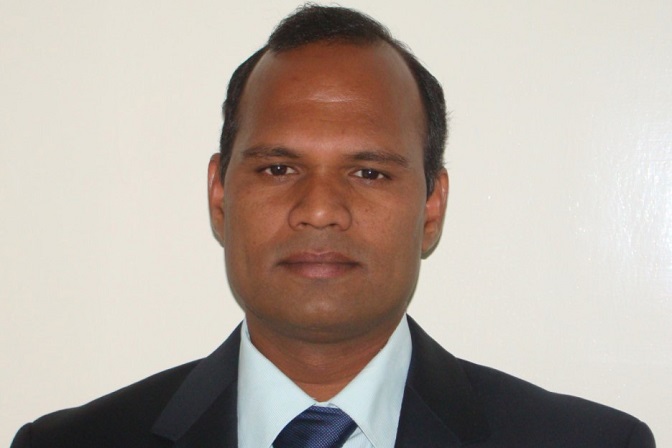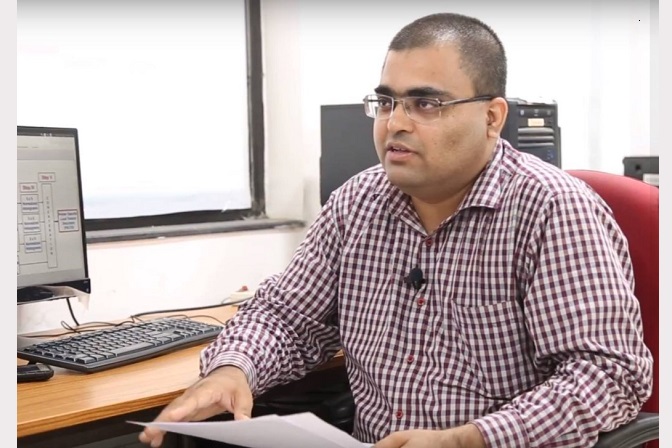Research Capsules
Study to help design fire evacuations in metro stations
Safety is a major concern amid the bustle of India’s metro stations, especially during the peak hours. With metro systems now a common sight in Indian cities, an IITGN-led study aims to enhance safety measures during busy hours, particularly in the event of a fire in an underground station.
New Perspectives on Upland Agriculture in the Northeast
Did you know how hill tribes of northeast India weave a captivating story within their traditional farming practices? Swidden agriculture, or shifting cultivation, is a traditional method where farmers clear, burn, and cultivate land for a few years before moving to a new area. Researchers at IITGN have delved into this traditional practice, specifically focusing on the Kuki tribes in Manipur
Study Probes Protein Mysteries in Alzheimer’s
Within the brain’s narrative, imagine a protein as a mysterious character possibly holding intriguing secrets. GSAP_I4 is one such less explored variant of GSAP, a protein involved in the brain’s complex processes, especially in conditions like Alzheimer’s disease. Understanding GSAP_I4’s role in our cells, mainly in the context of Alzheimer’s, is like solving a piece of the brain puzzle. Researchers at IITGN have examined GSAP_I4’s characteristics and its interactions with other molecules.
New hydrogels to boost burn recovery
Healing burn wounds has always been a lengthy process, but what if there was a solution to speed up the recovery? Researchers at the IITGN have developed a potent blend mixed with a graphene oxide (GO) base to create a robust hydrogel for faster burn wound healing.
Gold nanoparticles as promising candidates for effective cancer therapy
Fighting cancer can be tough, especially with the painful chemotherapy and high drug doses laden with toxic side effects. This underscores the need for advances in the ongoing efforts towards better therapeutic approaches. Researchers at IITGN strive to improve cancer treatment by making it less painful, more targeted, and with significantly fewer side effects.
𝗕𝗿𝗲𝗮𝗸𝗶𝗻𝗴 𝗟𝗮𝗻𝗴𝘂𝗮𝗴𝗲 𝗕𝗮𝗿𝗿𝗶𝗲𝗿𝘀 𝘄𝗶𝘁𝗵 𝗘𝗻𝗵𝗮𝗻𝗰𝗲𝗱 𝗠𝘂𝗹𝘁𝗶𝗹𝗶𝗻𝗴𝘂𝗮𝗹 𝗘𝗱𝗶𝘁𝗶𝗻𝗴 𝗶𝗻 𝗟𝗟𝗠𝘀
𝗗𝗲𝗰𝗶𝗽𝗵𝗲𝗿𝗶𝗻𝗴 𝗦𝗶𝗻𝗲 𝗟𝗮𝗻𝗴𝘂𝗮𝗴𝗲: 𝗔 𝗦𝘁𝗼𝗿𝘆 𝗼𝗳 𝗠𝗮𝘁𝗵𝘀, 𝗪𝗮𝘃𝗲𝘀, 𝗮𝗻𝗱 𝗠𝗼𝗿𝗲
𝗜𝗻𝘃𝗲𝘀𝘁𝗶𝗴𝗮𝘁𝗶𝗻𝗴 𝘁𝗵𝗲 𝗜𝗺𝗽𝗮𝗰𝘁 𝗼𝗳 𝗠𝗲𝘁𝗲𝗼𝗿𝗼𝗹𝗼𝗴𝗶𝗰𝗮𝗹 𝗨𝗻𝗰𝗲𝗿𝘁𝗮𝗶𝗻𝘁𝗶𝗲𝘀 𝗼𝗻 𝗛𝘆𝗱𝗿𝗼𝗽𝗼𝘄𝗲𝗿 𝗣𝗿𝗼𝗱𝘂𝗰𝘁𝗶𝗼𝗻 𝘁𝗼 𝗔𝗶𝗱 𝗜𝗻𝗱𝗶𝗮’𝘀 𝗘𝗻𝗲𝗿𝗴𝘆 𝗦𝗲𝗰𝘂𝗿𝗶𝘁𝘆
𝗕𝗿𝗲𝗮𝗸𝗶𝗻𝗴 𝗕𝗼𝘂𝗻𝗱𝗮𝗿𝗶𝗲𝘀 𝗮𝗻𝗱 𝗗𝗲𝗰𝗼𝗹𝗼𝗻𝗶𝘀𝗶𝗻𝗴 𝗠𝗼𝗱𝗲𝗿𝗻𝗶𝘀𝗺 𝗶𝗻 𝗕𝗲𝗻𝗴𝗮𝗹𝗶 𝗟𝗶𝘁𝗲𝗿𝗮𝘁𝘂𝗿𝗲
𝗘𝗻𝘃𝗶𝗿𝗼𝗻𝗺𝗲𝗻𝘁-𝗳𝗿𝗶𝗲𝗻𝗱𝗹𝘆 𝗡𝗮𝗻𝗼𝗰𝗿𝘆𝘀𝘁𝗮𝗹𝘀 𝗦𝗵𝗼𝘄 𝗣𝗿𝗼𝗺𝗶𝘀𝗲 𝗶𝗻 𝗥𝗲𝗱𝘂𝗰𝗶𝗻𝗴 𝗖𝗢𝟮 𝗘𝗺𝗶𝘀𝘀𝗶𝗼𝗻𝘀
𝗠𝗼𝗱𝗶𝗳𝘆𝗶𝗻𝗴 𝗗𝗡𝗔 𝗡𝗮𝗻𝗼𝗰𝗮𝗴𝗲𝘀 𝗳𝗼𝗿 𝗔𝗱𝘃𝗮𝗻𝗰𝗲𝗱 𝗕𝗶𝗼𝗺𝗲𝗱𝗶𝗰𝗮𝗹 𝗔𝗽𝗽𝗹𝗶𝗰𝗮𝘁𝗶𝗼𝗻𝘀
𝗘𝘅𝗽𝗹𝗼𝗿𝗶𝗻𝗴 𝘁𝗵𝗲 𝗣𝗼𝘁𝗲𝗻𝘁𝗶𝗮𝗹 𝗼𝗳 𝗦𝗲𝗮𝘄𝗲𝗲𝗱 𝗳𝗼𝗿 𝗜𝗻𝗻𝗼𝘃𝗮𝘁𝗶𝘃𝗲 𝟯𝗗 𝗣𝗿𝗶𝗻𝘁𝗶𝗻𝗴 𝗚𝗲𝗹𝘀
𝗗𝗶𝘀𝗰𝗼𝘃𝗲𝗿𝘆 𝗼𝗳 𝗮 𝗻𝗲𝘄 𝗻𝗮𝗻𝗼𝗺𝗮𝘁𝗲𝗿𝗶𝗮𝗹 𝘂𝗻𝗹𝗼𝗰𝗸𝘀 𝗻𝗶𝘁𝗿𝗼𝗴𝗲𝗻’𝘀 𝘀𝘂𝗿𝗽𝗿𝗶𝘀𝗶𝗻𝗴 𝗰𝗵𝗲𝗺𝗶𝘀𝘁𝗿𝘆
𝗡𝗼𝘃𝗲𝗹 𝗶𝗻-𝗵𝗼𝘂𝘀𝗲 𝘀𝘆𝗻𝘁𝗵𝗲𝘀𝗶𝘀𝗲𝗱 𝗺𝗼𝗹𝗲𝗰𝘂𝗹𝗲 𝗰𝗼𝘂𝗹𝗱 𝗯𝗲 𝗮 𝗽𝗿𝗼𝗺𝗶𝘀𝗶𝗻𝗴 𝘁𝗵𝗲𝗿𝗮𝗽𝗲𝘂𝘁𝗶𝗰 𝗶𝗻 𝗰𝗮𝗻𝗰𝗲𝗿 𝘁𝗿𝗲𝗮𝘁𝗺𝗲𝗻𝘁
𝗔 𝗡𝗼𝘃𝗲𝗹 𝗙𝗿𝗮𝗺𝗲𝘄𝗼𝗿𝗸 𝗳𝗼𝗿 𝗥𝗲𝗰𝗼𝗻𝘀𝘁𝗿𝘂𝗰𝘁𝗶𝗻𝗴 𝗮𝗻 𝗜𝗺𝗮𝗴𝗲 𝗳𝗿𝗼𝗺 𝗕𝗿𝗮𝗶𝗻 𝗦𝗶𝗴𝗻𝗮𝗹𝘀
𝗚𝗿𝗲𝗲𝗻 𝗳𝗹𝘂𝗼𝗿𝗲𝘀𝗰𝗲𝗻𝘁 𝗻𝗮𝗻𝗼𝗺𝗮𝘁𝗲𝗿𝗶𝗮𝗹𝘀 𝗳𝗼𝗿 𝗻𝗲𝘅𝘁-𝗴𝗲𝗻𝗲𝗿𝗮𝘁𝗶𝗼𝗻 𝗯𝗶𝗼𝗶𝗺𝗮𝗴𝗶𝗻𝗴 𝗮𝗻𝗱 𝘁𝗵𝗲𝗿𝗮𝗽𝗲𝘂𝘁𝗶𝗰 𝗮𝗽𝗽𝗹𝗶𝗰𝗮𝘁𝗶𝗼𝗻𝘀
𝗖𝘂𝗹𝗶𝗻𝗮𝗿𝘆 𝗽𝗿𝗮𝗰𝘁𝗶𝗰𝗲𝘀 𝗮𝗻𝗱 𝗴𝗲𝗻𝗱𝗲𝗿 𝗿𝗼𝗹𝗲𝘀 𝗶𝗻𝘀𝗶𝗱𝗲 𝘁𝗵𝗲 𝗸𝗶𝘁𝗰𝗵𝗲𝗻 𝘀𝗽𝗮𝗰𝗲𝘀 𝗼𝗳 𝗗𝗵𝗼𝗹𝗮𝘃𝗶𝗿𝗮
𝗦𝘁𝘂𝗱𝘆 𝗵𝗶𝗴𝗵𝗹𝗶𝗴𝗵𝘁𝘀 𝘁𝗵𝗲 𝗰𝗼𝗹𝗼𝘂𝗿𝗳𝘂𝗹 𝗻𝗮𝘁𝘂𝗿𝗲 𝗼𝗳 𝗹𝗮𝗻𝗴𝘂𝗮𝗴𝗲 𝘂𝘀𝗲 𝗶𝗻 𝗮 𝗺𝘂𝗹𝘁𝗶𝗹𝗶𝗻𝗴𝘂𝗮𝗹 𝗰𝗼𝗻𝘁𝗲𝘅𝘁
𝗥𝗲𝘀𝗲𝗮𝗿𝗰𝗵 𝗴𝗿𝗼𝘂𝗽 𝘀𝗲𝗲𝗸𝘀 𝘁𝗼 𝗱𝗲𝘃𝗲𝗹𝗼𝗽 𝗶𝗻𝗻𝗼𝘃𝗮𝘁𝗶𝘃𝗲 𝘄𝗲𝗮𝗿𝗮𝗯𝗹𝗲 𝗱𝗲𝘃𝗶𝗰𝗲𝘀 𝗳𝗼𝗿 𝘀𝗲𝗻𝘀𝗶𝗻𝗴 𝗮𝗽𝗽𝗹𝗶𝗰𝗮𝘁𝗶𝗼𝗻𝘀
𝗦𝘁𝘂𝗱𝗶𝗲𝘀 𝗿𝗲𝘃𝗲𝗮𝗹 𝘁𝗵𝗲 𝗲𝗳𝗳𝗲𝗰𝘁𝘀 𝗼𝗳 𝗽𝗹𝗮𝘀𝗺𝗮 𝗼𝗻 𝘁𝗵𝗲 𝘀𝗵𝗮𝗱𝗼𝘄 𝗻𝗲𝗮𝗿 𝘁𝗵𝗲 𝗯𝗹𝗮𝗰𝗸 𝗵𝗼𝗹𝗲𝘀 𝗳𝗼𝗿 𝗲𝘅𝗽𝗮𝗻𝗱𝗶𝗻𝗴 𝘂𝗻𝗶𝘃𝗲𝗿𝘀𝗲
𝗔𝗱𝘃𝗮𝗻𝗰𝗲𝗱 𝗺𝗲𝘁𝗵𝗼𝗱 𝗳𝗼𝗿 𝗮𝗰𝗰𝘂𝗿𝗮𝘁𝗲 𝗱𝗲𝘀𝗰𝗿𝗶𝗽𝘁𝗶𝗼𝗻 𝗼𝗳 𝗵𝗼𝘄 𝗺𝗼𝗹𝗲𝗰𝘂𝗹𝗲𝘀 𝗶𝗻𝘁𝗲𝗿𝗮𝗰𝘁 𝘄𝗶𝘁𝗵 𝗲𝗮𝗰𝗵 𝗼𝘁𝗵𝗲𝗿
𝗡𝗼𝗻-𝘂𝗻𝗶𝗳𝗼𝗿𝗺𝗹𝘆 𝗖𝗵𝗮𝗿𝗴𝗲𝗱 𝗣𝗮𝗿𝘁𝗶𝗰𝗹𝗲𝘀 𝗼𝗳 𝗗𝗶𝗳𝗳𝗲𝗿𝗲𝗻𝘁 𝗦𝗶𝘇𝗲𝘀 𝗙𝗼𝗹𝗹𝗼𝘄 𝗗𝗶𝘀𝘁𝗶𝗻𝗰𝘁 𝗣𝗮𝘁𝗵𝘄𝗮𝘆𝘀 𝗶𝗻 𝗣𝗼𝗹𝘆𝗺𝗲𝗿𝗶𝗰 𝗹𝗶𝗾𝘂𝗶𝗱𝘀: 𝗙𝗶𝗻𝗱𝘀 𝗦𝘁𝘂𝗱𝘆
𝗔 𝗽𝗿𝗶𝗻𝘁𝗲𝗿 𝘁𝗵𝗮𝘁 𝘁𝗿𝗮𝗻𝘀𝗳𝗼𝗿𝗺𝘀 𝘄𝗮𝘀𝘁𝗲 𝗽𝗹𝗮𝘀𝘁𝗶𝗰 𝗶𝗻𝘁𝗼 𝘂𝘀𝗮𝗯𝗹𝗲 𝗰𝗼𝗺𝗺𝗲𝗿𝗰𝗶𝗮𝗹 𝗽𝗿𝗼𝗱𝘂𝗰𝘁𝘀
𝗦𝗲𝗶𝘀𝗺𝗶𝗰 𝗱𝗲𝘀𝗶𝗴𝗻 𝗮𝗻𝗱 𝗿𝗶𝘀𝗸 𝗮𝘀𝘀𝗲𝘀𝘀𝗺𝗲𝗻𝘁 𝗼𝗳 𝘀𝘁𝗿𝘂𝗰𝘁𝘂𝗿𝗲𝘀 𝗳𝗼𝗿 𝗵𝗼𝗿𝗶𝘇𝗼𝗻𝘁𝗮𝗹 𝗮𝗻𝗱 𝘃𝗲𝗿𝘁𝗶𝗰𝗮𝗹 𝗴𝗿𝗼𝘂𝗻𝗱 𝘀𝗵𝗮𝗸𝗶𝗻𝗴
𝗜𝗿𝗼𝗻 𝗮𝗿𝘁𝗲𝗳𝗮𝗰𝘁𝘀 𝗿𝗲𝗰𝗼𝘃𝗲𝗿𝗲𝗱 𝗳𝗿𝗼𝗺 𝗮 𝗰𝗮𝘃𝗲 𝗴𝗶𝘃𝗲 𝗶𝗻𝘀𝗶𝗴𝗵𝘁 𝗶𝗻𝘁𝗼 𝘁𝗵𝗲 𝗶𝗿𝗼𝗻-𝗺𝗮𝗸𝗶𝗻𝗴 𝗽𝗿𝗼𝗰𝗲𝘀𝘀 𝗼𝗳 𝗺𝗲𝗱𝗶𝗲𝘃𝗮𝗹 𝘁𝗶𝗺𝗲
𝗦𝘁𝘂𝗱𝘆 𝗼𝗳 𝗜𝗜𝗜-𝗩 𝗮𝗻𝗱 𝟮𝗗 𝗺𝗮𝘁𝗲𝗿𝗶𝗮𝗹𝘀-𝗯𝗮𝘀𝗲𝗱 𝗵𝗲𝘁𝗲𝗿𝗼𝘀𝘁𝗿𝘂𝗰𝘁𝘂𝗿𝗲𝘀 𝗳𝗼𝗿 𝘁𝗵𝗲 𝗱𝗲𝘃𝗲𝗹𝗼𝗽𝗺𝗲𝗻𝘁 𝗼𝗳 𝗵𝗶𝗴𝗵-𝗽𝗲𝗿𝗳𝗼𝗿𝗺𝗮𝗻𝗰𝗲 𝗼𝗽𝘁𝗼𝗲𝗹𝗲𝗰𝘁𝗿𝗼𝗻𝗶𝗰 𝗱𝗲𝘃𝗶𝗰𝗲𝘀
𝗙𝘂𝗻𝗱𝗮𝗺𝗲𝗻𝘁𝗮𝗹 𝗧𝗵𝗲𝗼𝗿𝗲𝘁𝗶𝗰𝗮𝗹 𝗜𝗻𝘀𝗶𝗴𝗵𝘁𝘀 𝗚𝗲𝗻𝗲𝗿𝗮𝘁𝗲𝗱 𝗯𝘆 𝗜𝗜𝗧𝗚𝗡 𝗧𝗲𝗮𝗺 𝗖𝗼𝗻𝘁𝗿𝗶𝗯𝘂𝘁𝗲 𝘁𝗼 𝗖𝗼𝗻𝘁𝗿𝗼𝗹𝗹𝗲𝗿 𝗦𝘆𝗻𝘁𝗵𝗲𝘀𝗶𝘀 𝗶𝗻 𝗔𝘂𝘁𝗼𝗺𝗮𝘁𝗲𝗱 𝗧𝗿𝗮𝗰𝗸𝗶𝗻𝗴 𝗔𝗽𝗽𝗹𝗶𝗰𝗮𝘁𝗶𝗼𝗻𝘀
Insight into dielectric properties of new-generation all-inorganic perovskite materials
𝗚𝗲𝗻𝗲𝗿𝗮𝘁𝗶𝗼𝗻 𝗼𝗳 𝗲𝗹𝗲𝗰𝘁𝗿𝗼𝗰𝗵𝗲𝗺𝗶𝗰𝗮𝗹 𝗲𝗻𝗲𝗿𝗴𝘆 𝘂𝘀𝗶𝗻𝗴 𝗰𝗵𝗲𝗺𝗶𝗰𝗮𝗹𝗹𝘆 𝗽𝗼𝘄𝗲𝗿𝗲𝗱 𝗮𝗰𝘁𝗶𝘃𝗲 𝗺𝗼𝘁𝗼𝗿𝘀
Study investigates coalescence preference of water droplets
𝗡𝘂𝗺𝗲𝗿𝗶𝗰𝗮𝗹 𝗺𝗼𝗱𝗲𝗹 𝗰𝗼𝘂𝗹𝗱 𝗵𝗲𝗹𝗽 𝗶𝗻𝗱𝘂𝘀𝘁𝗿𝗶𝗲𝘀 𝗱𝗲𝘀𝗶𝗴𝗻 𝗹𝗶𝗴𝗵𝘁𝘄𝗲𝗶𝗴𝗵𝘁, 𝗮𝗱𝗱𝗶𝘁𝗶𝘃𝗲𝗹𝘆 𝗺𝗮𝗻𝘂𝗳𝗮𝗰𝘁𝘂𝗿𝗲𝗱 𝗰𝗼𝗺𝗽𝗼𝗻𝗲𝗻𝘁𝘀
Exploring nanomaterial’s potential to capture carbon dioxide from environment
Carbon capture and storage is considered one of the most effective approaches to reduce carbondioxide (CO2) emissions that drive global climate change. Researchers at IITGN explore the potential of nanoscaled metal diborides to enhance the CO2 capture.
Exploring mathematics from a literary perspective
A paper by Prof. Arka Chattopadhyay of IITGN makes us think about the social and political significance of numbers and counting in everyday life. To think about number in our social life, let us consider everyday operations like OTP or the number of likes on social media. Prof Chattopadhyay’s work explores J. M. Coetzee's novel, The Schooldays of Jesus (2016), which presents a mythology of numbers as stars and imagines dance as a way of invoking these numbers. The study is a step towards thinking numbers as an idea that goes beyond calculation and shows how processing numbers can evoke feelings. For example, we could think of numbers and anxiety the way we would look at Covid numbers everyday on the news, during the pandemic.
Study could help design novel, advanced bio-inspired composites
Nacre, an inner layer of molluscan shells, has attracted the attention of researchers over the past few decades owing to its remarkably high toughness and mechanical strength. Various applications of nacre- inspired composites have also been extensively studied. This IITGN-led research opens new avenues for synthesis and use of advanced nacre-inspired composites with numerous applications in the development of high-strength armour materials, strong and durable scaffolds for bone tissue engineering, automobile and aviation applications, etc.
Large-scale, eco-friendly production of highly pure nanosheets
#Nanostructured compounds of Molybdenum disulfide (MoS2), an inorganic compound, attract attention as their favourably unique properties allow their use in various applications. Large-scale synthesis of MoS2, though attempted several times, continues to remain a challenge for good-quality commercial production. The study explores a novel, eco-friendly approach for large-scale and high-yield production of stable MoS2 nanosheets that find potential applications in printing electrodes of capacitors and batteries, inkjet devices, and flexible and wearable electronic devices. The reported high-pressure spray method results in high-yield exfoliation of 4 to 7 layers of MoS2 #nanosheets.
Tuning cable-driven manipulator’s stiffness to enable human-robot interaction tasks
Manipulators with serial chain architectures are being widely used by the robotics community owing to their unique properties like high repeatability, large workspace, and ease of control. Over the years, cable-driven serial-chain manipulators (CDSMs), where motor actuated cables apply external forces on links to control the end-effector motion, have emerged as an important robotic platform. Among the various performance measures of a manipulator, stiffness is a critical characteristic as it regulates its rigidity, positioning, and trajectory tracking accuracy during a physical interaction task. An IITGN-led work provides insight into the ability of a CDSM to tune stiffness for human-robot interaction tasks.
A deep learning model to obtain best designs for optical devices
Various nanostructures can be used to create an infinite number of metamaterials. However, the problem of inverse design which seeks to achieve the desired performance using optimal properties and algorithms poses challenges. In order to address these challenges, the metamaterial researchers are bringing into play data-driven approaches like deep learning. An IITGN-led team used a deep learning-based approach together with an evolutionary algorithm to obtain designs for metamaterial color filters and color splitters useful for complex optical devices. The team fabricated the inverse-designed structures in the nanofabrication facility in Centre for Design & Fabrication of Electronic Devices, IIT Mandi and experimentally demonstrated their performance improvements.
How electrodialysis can outperform reverse osmosis for desalination
Electrodialysis (ED) is a water treatment process that uses ion-exchange membranes and an applied electric field to remove salts and charged organic matter. Though ED is commercially available, Reverse Osmosis (RO) dominates the water desalination and purification market. However, the academic literature has shown that ED is energetically favorable to use for lower salinity feed solutions compared to RO. IITGN researchers draw an analogy between ED and RO to clearly identify the conditions under which ED is economically favorable compared to RO for desalination, in terms of the cost of pure water production.
How DNA nanostructures’ geometries influence their biological interactions
Nanostructures made of synthetic DNA have been used for drug delivery, and in diagnostic and therapeutic applications. Cellular delivery of such nanostructures is highly desirable as they must be efficiently taken up by the cells to perform the required function. Although DNA nanotechnology has spawned nanostructures with varied shapes and sizes to be used as cells’ delivery vehicles, significantly fewer studies have addressed the influence of shape, size, and cell type in their cellular uptake process.
Luminescent metal-based complexes could be promising agents for cancer treatment
Photodynamic therapy (PDT) is an emerging treatment that combines light with special drugs, called photosensitizing agents, to kill cancer cells. Metal-based photosensitizers have been widely explored for PDT. IITGN researchers have designed metal-based hybrid complexes for anti-cancer applications. These complexes show strong emission in the red to near IR (infrared) region. Strong luminescence can be utilized for live-cell imaging and PDT applications.
Ramping up production of narrower microbubbles for targeted drug delivery
IITGN researchers have demonstrated synthesis of micro-sized bubbles that can be used in ultrasound imaging and targeted drug delivery. Microbubbles are small gas-filled bubbles widely used as ultrasound contrast agents owing to their specific acoustic properties. What’s new is that the IITGN-led team used an unconventional approach to generate narrow-sized microbubbles at a relatively faster rate.
Novel formulation that could be an excellent candidate for therapeutic applications
Porphyrins are the organic compounds involved in various biologically important activities, including oxygen transport and photosynthesis. Owing to their excellent imaging capacities and photo-therapeutic properties, they find applications in numerous fields, like fluorescence imaging, and medicine. IITGN researchers have developed a formulation loaded with novel porphyrin molecules, which is effective against cancer cells.
Metal-boride-derived nanosheets could be next-generation photocatalysts for hydrogen evolution
A collaborative research work carried out at IITGN has showcased the rich potential of nanosheets derived from metal borides as true photocatalysts towards hydrogen evolution. The team has created a facile scheme wherein, Hydrogen (H2) evolution can be achieved within a test tube laced with a nano-catalyst by simply placing it in front of a light source. The production of H2 was viable even with power as low as that of half of the sun’s power. In the study published in the International Journal of Hydrogen Energy, the team reports that the catalyst concoction comprising the nanosheets and gold nanoprisms in precise amounts, can even produce H2 under Ultraviolet and Near-Infrared irradiation. Moreover, this catalyst can produce similar results when only exposed to natural sunlight. The experimental conditions designed by the researchers are mild and relatively less energy intensive. The team believes that the method could have promising commercialization prospects and thereby make a positive impact on the energy requirements of the country.
Searching erosion hotspots and future seismic locus in the Himalayas
Dr. Saptarshi Dey, an INSPIRE Faculty at IITGN, and his team is working towards understanding some longstanding questions concerning this lofty mountain range. They are digging into the factors that control erosion and sediment delivery from the Himalayas. The group also aims to find out the potential tectonic features that can cause earthquakes in the region in near future. The team studies Earth surface processes over decadal to millennial timescales. They combine geochronology, sedimentology, remote sensing, isotope geochemistry to quantify the process rates. A great deal of their work is dependent on field campaigns in high mountain landscapes which adds thrill to the science.
Creating 3D shadow art sculptures using differential rendering
The shadow works like ‘Sunset over Manhattan’ and the ‘Wild Mood Swings’ are indeed astounding enough to leave us wonderstruck. This art of casting beautiful shadows of objects under proper lighting is called shadow art. It is a unique form of sculptural art where 2D shadows cast by a 3D sculpture produce artistic effect. Researchers at IITGN introduce a method to create 3D shadow art sculptures that cast different shadows when lit from different directions. For this, they used an optimisation framework called differentiable rendering, which is used for 3D reconstruction. The generated complex 3D sculptures go beyond those seen in contemporary art pieces. What’s more interesting is that through this method, they have obtained the 3D sculpture solely from a set of 2D shadow images and their corresponding projection information, thus, eliminating the need for any 3D data collection and annotation.
Investigating the role of a key modulator protein in Alzheimer’s disease
AD, a common neurodegenerative disorder and a leading cause of dementia, is characterized by the accumulation of amyloid beta (Aβ) peptides. In the AD-associated pathway, an enzyme called β-secretase initiates cleavage of amyloid precursor protein (APP), which is an integral membrane protein, to generate a particular fragment (C-99) of APP. This fragment is further cleaved by γ-secretase enzyme to generate the Aβ. Previous studies report that the inhibition of a large protein complex called Gamma (γ)-Secretase activating protein (GSAP) reduces the deposition of Aβ plaques in brain tissue points, thus making it a promising therapeutic target in the treatment of AD. However, this novel protein has not been studied extensively and its interaction with APP C-99 has not been sufficiently examined. This IITGN-led work identifies and maps the interaction region of GSAP and APP C-99 in the AD-associated pathway. The team employed a range of molecular biology, biophysical and biochemical approaches to explain the domain-specific affinity of GSAP towards APP C-99. By determining this protein-peptide interaction, they establish a crucial and previously undefined mechanism of action for GSAP trafficking within the AD-associated pathway.
Digging into the roots of glass making in India
Dr. Alok Kanungo of IITGN, in collaboration with Dr. Laure Dussubieux, Field Museum, USA, records and validates the Indian knowledge system on glass making. The work provides new insights into the roots and innovations of the occupation, which is now on the verge of extinction. Through their research, Dr. Kanungo and Dr. Dussubieux compare the chemical analysis of glass samples obtained from various glass workshops operating a few decades ago with the information obtained elsewhere. This comparison has helped refine the story of traditional Indian glass making.
Impact of disasters on the marginalised communities of the Sunderbans
Marginalised groups are identified as highly vulnerable populations largely deprived of social, educational, and economic opportunities. This research argues that the Sunderbans’ socially disadvantaged groups are experiencing a similar process of marginalisation whereby they are pushed into vulnerable ecological spaces and hold economically inferior societal positions. They majorly depend on the limited mangrove forest resources for livelihood, which puts them in regular contact with tigers and other wild animals. The team also found that alongside local communities, even tigers and mangrove species are marginalised because the trio co-inhabit the same vulnerable and contested site, leading to layered interactions between them for limited resources and spaces, especially when exposed to the risk of frequent cyclonic devastations. The project seeks to initiate a community radio setup by collaborating with local stakeholders like NGOs and village panchayats for its outreach program.
Understanding biases in the news media reporting on air pollution
According to the research team led by Prof Nipun Batra of IITGN, theirs is the most extended study, to date, of air pollution-based news articles with 190 Indian cities analysed. They curated a dataset of 17.4k news articles on air pollution from two leading English daily newspapers spanning 11 years (2010-2021). The team’s analysis revealed that although air pollution is a year-long problem in India, the news media’s interest in the issue is periodic, indicating temporal bias. The issue is discussed only when the effect is high and visible as smog during winter. In addition, #geographical bias is observed as the media pays more attention to the #MetropolitanCities rather than the cities in the Indo-Gangetic plane, which are highly polluted. Moreover, the Indian news media focuses on quickly visible sources like #VehicularEmissions and open burning, while they miss reporting about household sources that significantly contribute to air pollution.
Early warning indicators to prevent irrecoverable losses in real-world systems
Networked systems range from natural to man-made systems like the internet, multi-modal #transportation networks, #power grids, and #water distribution systems. These systems and their intended functionalities are drastically affected by events like #tsunamis, power blackouts, and failure of distribution systems, further impacting any country’s #economy. The IITGN researchers have used data from the United States Airspace Airport network, Indian Railways Network, and synthetic networks to study their responses to synthetic attack strategies of varying sizes. The study’s results illustrate significant relationships between robustness measure and disruption size for different networks.
Green synthesis of carbon-based quantum dots could be used for biomedical applications
Diseases like #cancer account for millions of deaths annually and require treatment at early stages. Over the past few years, the biomedical industry has witnessed a surge in demand for miniaturised devices to improve the diagnosis and treatment of diseases. Several #nanoparticles are used in applications like bio-imaging, bio-sensing, immunoassays, and more. QDs form a favourable candidate for biomedical applications as different fluorescence emissions can be obtained by tuning their size.
New treadmill technology to offer risk-free exercising platform
Treadmill workouts, apart from being an essential part of #sports and #gyms, have proved to be effective in gait training for those with movement disorders. However, often there are reports of unforeseen #HeartAttacks, deaths, or sudden discontinuation from the #exercise on treadmills at #FitnessClubs and #SportsCentres. Researchers at IITGN are now all set to make gait training risk-free, with their #invention of a new treadmill exercise platform called “PTreadX”.
Bead impressions studies bespeak historical transformations in their drilling technologies
The beads made of semi-precious stones are an important part of specialised #craft tradition due to their extensive use for ornamental purposes from #Neolithic period to date.
Novel, environment-friendly catalysts for chemical reactions
Porphyrins, a group of organic compounds with complex cyclic structures, play a key role in some life processes. Moreover, they act as valuable catalysts in organic synthesis.
Diving deep into the dynamics of confined fluids
Prof Sutapa Roy, Assistant Professor, Physics, IITGN, works in the field of Statistical Physics and Complex Systems. The sub-systems of her research interests include phase transition, confined fluids, Casimir forces, active colloids, droplets, etc., and the work is based on various computational methods.
Modified biomaterials from DNA and peptides could have promising future applications in neuroscience
Hydrogel is a 3D network of polymer chains with water absorbance ability. During the past decades, DNA-based hydrogels, a new class of biomaterials, have gained significant interests for potential biomedical applications and as scaffolds for programming cellular systems. The DNA hydrogels are 3D DNA polymer matrices possessing the chemical properties of DNA while physically acting like a hydrogel.
Towards developing a targeted therapy for cancer-causing bacteria
A common risk factor and one of the leading causes of gastric cancer and cancer-related deaths is the Helicobacter pylori (H. pylori) bacteria that live in the human stomach. The past decade has witnessed a sudden surge in its infection rate worldwide by 50% due to the emergence of anti-microbial resistance in H. pylori over time, hence challenging the current therapeutic strategies to cure the infection efficiently. Therefore, there is a pressing need to identify new potential drug targets and develop novel antibiotics to control the infection.
Novel molecules to illuminate cell's largest organelle in cancer and non-cancerous cells
The endoplasmic reticulum (ER), the largest organelle in the eukaryotic cells, is responsible for serving myriads of cellular functions. The ER plays an important role in protein biosynthesis and regulates protein processing through post-translational modifications, which, if disrupted, leads to stress accumulation (ER stress) inside the cells.
Investigating two-demensional (2D) materials for future computing and devices
To turn technology into a reality in the semiconductor industry, there is a need to build collaborative teams with members from across the world. IITGN researchers are making efforts towards identifying 2D materials, devices, and circuits that can be co-integrated into silicon chips for added functionalities.
How Indigenous Communities can Guide of Process of Sustainable Development
The first-of-its-kind research article by Prof Aashish Xaxa of IITGN brings to the fore the importance of restoring land control back to the indigenous peoples, rather than keeping it in the vestige of any body politic, for a sustainable urban future.
Process Engineering, Control, and Optimisation Group at IITGN
Prof Hari Ganesh, Assistant Professor in Chemical Engineering at IITGN, is specialised in the field popularly known as Process Systems Engineering (PSE). PSE deals with the development of sophisticated mathematical models and computational tools for the design, control, and optimisation of chemical processes. The PSE sub-discipline involving engineering, applied mathematics, and computing has played a crucial role in defining chemical engineering as one of the most rigorous and mathematically-based engineering disciplines.
Do smaller governments cater more for their citizens?
One of the fundamental functions of government is to provide public goods to its citizens. Now the question arises, do smaller local governments do it better? A study conducted by Prof Deepak Singhania of IITGN answers this question by showing that smaller local governments, when also held accountable, provide more for their citizens.
Towards saving energy in the effluent treatment by the textile dyeing industry
IITGN researchers, for the first time, have experimentally demonstrated how controlling the #chemicals used in the #dyeing process baths can reduce the energy consumption in the effluent treatment plant.
A robust optical sensing method could be using in therapeutic ultrasound monitoring applicaitons find study
A study by IITGN researchers shows that a robust opticalSensing method has the ability to detect ultrasound frequencies used in biomedical applications. The approach is highly-sensitive, resistant to electromagnetic interference, and could find applications in therapeutic ultrasound monitoring.
Towards securing the data exchanged through modern applications
Researchers present a verified implementation of protocols that form the basis of applications like WhatsApp and WireGuard. This guarantees the non-existence of security bugs, which in turn, would protect the data being exchanged through these applications. Modern applications rely on a variety of secure channel protocols. Noise protocol is a framework that can be used to construct secure channel protocols, some of which are used in popular applications such as WhatsApp and WireGuard. The specifications and implementations of these protocols, however, may be bug-prone and have security issues that may leak secret data to adversaries. Prof Abhishek Bichhawat, Assistant Professor, Computer Science and Engineering at IITGN, in collaboration with researchers from Inventeurs Du Monde Numérique (INRIA) and Microsoft Research, has presented the first verified implementation of the Noise protocol framework.
Finding and counting graph patterns
An IITGN research team, in collaboration with the researchers from the Universität des Saarlandes - Saarland University, IIT HYDERABAD, and Indian Institute of Technology Goa, has found that more efficient algorithms can be used for counting and detecting patterns. Through this project, the researchers aim to understand the structural aspects of patterns that make finding or counting them easy or hard.
The discovery of shell midden provides insights into the prehistory of the Khadir Island
The UNESCO World Heritage Harappan site of Dholavira is located on Khadir Island in the Great Rann of Kachchh. An IITGN-led team recently investigated the past climate stages of this island in relation to the site. The study has led to the discovery of a shell midden site, 17 km southeast of Dholavira near village #Bambhanka. A shell midden is an archaeological site composed of heaps of remains of shell-bearing animals. It provides valuable information about the diets and habits of past societies. The discovery will enable a better understanding of the prehistory of Khadir, now datable to around the 6th millennium BP, before the emergence of settled human life. Moreover, the updated information can be used by the education department and tourism industry.
New model to analyse the effect of natural disasters on transportation systems
An IITGN research team led by Prof Udit Bhatia has developed a framework to study the effect of concurrent hazards, like #floods, #landslides, and #debris flow on transportation systems. Their integrated predictive model can accurately understand and assess the real magnitude of heavy rainfall-induced damages in regional road networks. Enhancing resilience requires an understanding of the risk for pre-disaster preparedness and post-disaster recovery. This hazard model along with the team’s patented complex network framework can help administrators identify the ‘hotspots’ which should be reinforced and protected to solve highway-flooding issues and minimise the socio-economic disruptions.
A robot that learns movements on its own
Humans can learn to perform new tasks by repeated trials (practice), and they can also learn to adapt to environmental perturbations in movement tasks they have already learnt. For most tasks, humans can do this with no supervision or coaching. An IITGN research team led by Prof Harish Palanthandalam-Madapusi aims to bring similar functionality to robots. The robot learning in the video (https://bit.ly/3LGOJQj) is one of their early successes in bringing self-learning by trial-by-trial practice (both for learning to move along new trajectories and to adapt to environmental perturbations).
Towards improving predictions of future sea-level rise and their rates along the Northern Indian Ocean
With increasing global temperatures, the world grapples with the challenge of rising sea levels that is a threat to low-lying coastal communities and infrastructure. It is thus crucial to accurately understand the mechanisms and their contribution towards the ongoing sea-level rise. Coral reefs, the shallow-marine habitats, have been extensively used as paleo/past sea-level records because coral reefs live within strict ecological requirements. Hence, they provide an opportunity to examine sea-level fluctuations and reef growth rates on various time scales.
Probing into the expressivity of non-human bodies
Prof Angus McBlane, Visiting Assistant Professor at Humanities and Social Sciences, IITGN, is working on a project that focuses on experiential, embodied, and lived aspects in posthumanism. Posthumanism emerges from the idea that humans are not set above the world nor entirely distinct from non-human animals, objects, and concepts. The work could promote a different way of thinking about bodies, the world, and our relationship with others within it.
Mitrochondria-targeting nanoparticles may help develop novel anti-cancer therepay approach
We know of mitochondria as the ‘powerhouse of the cell’. But did you know that #mitochondria are also known to participate in several #diseases, including #cancer? In recent years, targeting mitochondrial #DNA in #CancerCells has increasingly emerged as a strategy for anti-cancer therapy. However, the selective targeting of mitochondria in the cellular milieu of #cancer cells is still a daunting challenge. Owing to their vast potential as promising #drug delivery vehicles, #nanomaterials have been considered and explored as a medium to deliver DNA-damaging drugs into the mitochondria of cancer cells for improved therapeutic efficacy.
The new mathematical model could help design efficient filters
Prof Satyajit Pramanik of IITGN and the research team of the University of Oxford have devised a simple mathematical model for the possible design of efficient filters, like vacuum cleaners, water filters, etc. Towards this, the team has presented a first of its kind rigorous mathematical analysis through their findings published in the Journal of Fluid Mechanics. They have used mathematical tools and analysis to provide a novel mathematical model for the flow of water/air contaminated with solute (chemically hazard/dust particles) through a porous media, such as a filter in a vacuum cleaner.
Novel technique to turn seawater into safe drinking water
The study’s findings recently published in Nature Communications pave the way for affordable and energy-efficient drinking water solutions. An IITGN research team led by Prof Gopinadhan Kalon reported the development of the first-ever method to controllably tweak graphite inside aqueous solutions without damaging the structural integrity of graphite.
New approach opens the door to large-scale hydrogen production
Prof Nitin Padhiyar of IITGN along with a former MTech graduate, Md Zafar Ahmed, conducted the first-ever comparative study of the optimal operation of tubular and spherical reactors, on the basis of the power loss due to pressure drop. The three objective functions of the optimisation approach include maximisation of hydrogen production, minimisation of carbon dioxide emission, and minimisation of power loss due to pressure drop. The results show that the spherical reactor has the edge over the tubular reactor in terms of low power loss and therefore more #energy savings. Their reactor design approach meets the important aspects, like #environment #pollution, cost, and productivity and can be used to design other similar processes in fixed bed reactors.
Human-controlled multiple drone system carrying suspneded weights
IITGN researchers, led by Prof Vineet Vashista, conducted experiments to show how a human operator can control a multiple drone system carrying cable-suspended payloads. They developed state-of-the-art control strategies to reduce the oscillations in the cables and payload for enabling smooth and stable transportation.
How attention distraction takes place in a natural environment
Prof Meera Mary Sunny of IITGN along with her PhD students, Uthara Brahadeesh and Kishore Kumar Jagini, is working towards bridging the gap in the understanding of these mechanisms by investigating the nature of distractor processing in multisensory contexts and the behaviour of multisensory objects as distractors. They are trying to understand the mechanisms involved in distractor processing within multisensory contexts. This relatively new area of study has the potential to uncover the general principles underlying the nature of unitary conscious experience. The research will also elaborate on the mechanisms underlying attentional processes.
Certain geometric aspects of number theory
A derivative operator is an important tool that has led to modern-day calculus. It often allows us to approximate complicated functions with simpler ones. In the case of numbers, an analogue of differentiation is given by p-derivations. This enables us to ‘approximate arbitrary numbers’ with respect to a fixed prime number p. Prof Arnab Saha of IITGN and Prof Debargha Banerjee of IISER Pune look into the geometry of spaces that naturally arise from such p-derivations and modular forms.
Investigating structural effects of a protein associated with neurological disorders
Dr Lata Rani and Prof Sairam S Mallajosyula of IITGN has conducted one of the first theoretical studies to describe the influence of PTMs on the PHF structure of Tau protein. They investigated the impact of phosphorylation and O-GlcNAcylation, a type of #glycosylation, on the conformation of tau PHFs at experimentally verified PTM sites. The researchers found that the structural effects upon PTMs were prominent for phosphorylation compared with those for O-GlcNAcylation. The study’s results would be insightful for further drug-discovery endeavors.
Unearthing the occurrence of mineral deposits at the Harappan sites of Gujarat
The archaeologists at IITGN embark on the study to understand the occurrence of some raw materials from the Harappan sites in Gujarat. The present study builds upon the past mineralogical investigations that reveal the occurrence of raw materials like agates and ores. It also finds new information on the occurrence of ochre, a natural clay earth pigment, within the Khadir island on which Dholavira is situated. The IITGN-led team also found that the ‘Ernestite’ nodule from Bhagatrav (south Gujarat) exhibited similar mineral structure from other Harappan sites, indicating its use in bead drilling, even in rural settlements. The Harappans mastered the use of ernestite, a hard rock, for producing drill bits to perforate beads, and exported to distant locations in Mesopotamia (modern Iraq). The team includes Ravi Kant Prasad, post-doctoral fellow and Prof V N Prabhakar, Associate Professor, Humanities and Social Sciences, IITGN.
Simple method to prepare free-standing metal films of high index orientation
An IITGN research team came up with a simple yet cost-effective way to fabricate free-standing single-crystal films of metals. This is done by depositing metal vapour on a carefully-prepared surface of rock salt. Compared to previous work, this approach not only allows one to grow single crystals but also choose the orientation of the crystal from a list of possibilities including some difficult to achieve high index orientations.
New and engaging paradigm to access dual-tasking in individuals
Prof Vineet Vashista at the Human-Centered Robotics Lab, IITGN, along with his PhD student, Yogesh Singh, conducted studies that focused on the dual-motor-task paradigm. This is the first-ever study wherein they used a virtual reality system to construct and project the experimental conditions. The team designed a dual-motor-task paradigm wherein the 24 healthy subjects catch and throw a ball (secondary task) in the virtual environment while walking (primary task) over ground. The participants walked conservatively during dual-tasking. However, the secondary task objective was met significantly better in dual-task than in single-task.
Balance is hard, even in theory
For computer scientists, solving the puzzle of imbalance in general is an example of what they call a “hard problem”. So if you could come up with an algorithm that can find the optimal ordering for any network of friends very efficiently, then that would have surprising consequences! Nonetheless, it’s a problem we want to solve, for fun and profit, given that the notion of imbalance has varied applications (for instance, in graph drawing). The work of IITGN researchers, Harshil Mittal and Prof Neeldhara Misra, involves designing an algorithm to compute imbalance-optimising layouts for friendship networks with a certain special structure – roughly speaking, ones that are generally very friendly except for a small number of people.
Quantum Statistics can lead to Enhanced Thermal Machines
Prof Prasanna Venkatesh of IIT Gandhinagar along with his collaborators considered an ensemble of indistinguishable quantum machines to show that quantum statistical effects can cause a genuine quantum enhancement of the collective thermodynamic performance. Typically, it is assumed that multiple thermal machines produce an additive effect in terms of output. However, the team has shown that the collective effects present when the machines are indistinguishable Bosonic systems leads to enhanced performance. This effect suggests that it may be possible to design better thermodynamic devices in the future by exploiting quantum statistics.
Impacts of global ecological change on multilingual society
India is a linguistically diverse country. Researchers at IITGN seek to understand the impact of changes in ecology and experiences of dislocation, migration, and resettlement on the reorganization of multilingualism. Towards this, Prof Nishaant Choksi of IITGN along with his team is doing the linguistic ethnographic fieldwork and documentation covering a wide span across the Indian Ocean region. The cases present instances of climate and development induced ecological changes, and evidence of ongoing reorganization of multilingual practices among the communities living in highly multilingual regions.
Study could help formulate design parameters for civil engineering structures
Naman Kantesaria, a PhD student of Prof Ajanta Sachan of IITGN, studied the soil response under dynamic loading conditions such as earthquake shaking, machine vibrations, vehicular movements, wind and water wave vibrations, etc. The study can be used to formulate a realistic analysis approach and design parameters.
Novel approach towards developing a digital signal processor
Prof Nithin George of IITGN and his team has utilised the concepts of distributed arithmetic, probability theory, and approximate computing to propose a novel approach for efficient realisation of inner-product architectures. The proposed designs consume nearly 40% less area and 41% less energy in 45nm CMOS (Complementary Metal-Oxide-Semiconductor) technology, used for constructing integrated circuits, with 25% less error than the existing structures. This work is a critical step towards developing a low-power digital signal processor, one of the fundamental constituents of an assistive listening device.
Analytical study to explore regions of instability in bi-linear Mathieu equation
Piecewise linear oscillators are essentially nonlinear. Though they are seemingly uncommon, there are many engineering systems that exhibit piecewise linearity. For example, gear pairs with periodic stiffness and backlash, structural beams with breathing cracks, asymmetric stiffness in tension and compression in structures, etc. Analytical study of such dynamical systems is not readily amenable to well-known analytical/asymptotic techniques. Prof K R Jayaprakash, Assistant Professor, Mechanical Engineering, IITGN and Prof Yuli Starosvetsky, Associate Professor, Faculty of Mechanical Engineering, Technion, Israel, conducted a study to devise analytical approaches to explore the regions of instability in piecewise linear Mathieu equation.
Fast and Efficient Model for estimation of peak-current
Prof Ragavan K at IITGN, along with Amarkumar Kushwaha (PhD student) from IIT Bombay, has proposed a fast approach to achieve this. The proposed model is an alternative to time-consuming dynamic simulation models for steady-state peak current estimation. It is expected to be fast and efficient for the estimation of the peak-current magnitude. This model can be used as the first step for the selection of switches while designing the power converter of the SRG. It can further be modified into a torque estimator, and hence, can be integrated in the optimisation routine because of faster computation.
Wildlife Conservation: A social process on a daily basis
Prof Ambika Aiyadurai of IITGN and Sayan Banerjee, PhD Scholar at the National Institute of Advanced Studies, Bengaluru, India, analysed a typical Asian elephant conservation project in Assam, India. Unlike the existing studies on community-based wildlife conservation in India, this study demonstrates conservation to be a social process in which actors such as the local community, NGO-based project managers and staff, government agencies, and international donor agencies, interact and thus, collaborate or engage into conflict.
Glass bangles in India: Antiquity, Functional Use and Tradition
The study conducted by Dr Alok Kumar Kanungo of IITGN brings forth detailed information on the indigenous production of glass bangles in northern India ranging from furnace engineering, pyro technology, collection of raw materials and fuel for furnaces to the intricacies of various manufacturing techniques and the socio-religio-cultural and economic roles of glass bangles in different societies.
A Nice Geometric Structure for Certain Quiver Representations
In mathematics, a quiver is a directed graph (graph made up of a set of vertices connected by directed edges) possibly with multiple loops and arrows between two vertices. A representation of a quiver assigns a vector space to each vertex and a linear map to each arrow. Quivers and their representations have been an active area of research for many years and have applications in many other branches of mathematics such as #algebra, Lie theory, algebraic #geometry, and #physics.
Caste, Ethnicity and Middle-class Politics in Colonial India: A Case study from Assam
Prof Madhumita Sengupta’s research revolves around questions of caste, class, and ethnicity in colonial India. One of her recent publications argues that Assamese literary representations of the European planter (tea estate manager) during the colonial regime drew a veil over the dark side of plantation abuses. The authors analyse the Assamese short story, ‘Chameli Memsaab’, written by Nirode Chaudhury, describing the intimate relationship between a European Planter sahib and a woman plantation worker (coolie). The paper foregrounds the apathy of the Assamese middle class towards the plantation workers distanced from the former by virtue of caste and ethnicity.
Physics beyond the Standard Model
One of the deepest questions one can ask is: “What is the world made up of at the most fundamental level?”. We have partial answers, yet a consistent theoretical framework that can answer all the experimental findings still eludes us. An IITGN research group led by Prof Baradhwaj Coleppa tries to understand how the most fundamental constituents of matter interact with one another. Their work serves to fulfil an important intellectual purpose in the scientific quest to understand the universe we inhabit.
Why RO outperforms other technologies for desalination?
You may have heard that desalination, the process of obtaining freshwater by removing salts and minerals from saline water, is quite energy-intensive. The cost of energy can contribute to approximately 25–40% of the total cost of water. Various technologies, powered by different kinds of energy input have been developed. Reverse Osmosis (RO) and Multiple-Effect Distillation (MED) are two major desalination technologies. While RO purifies water through membrane pores, MED uses heat to evaporate and then condense pure water.
New lead for safe earthquake-resistant designs of structures
Through a study published in Earthquake Engineering and Structural Dynamics (by Wiley Online Library), Prof Dhiman Basu and Dr Gopala Krishna Rodda (formerly a doctoral student and post-doctoral research associate) in Structural Seismic Engineering Group (SSEG), IITGN, propose a novel framework for simulation of ground motion caused due to an earthquake.
A new regulator of boundaries in our DNA
Each human cell nucleus contains over 4m of DNA packed inside a tiny nucleus. Ever wondered, how is it that the same DNA that we inherited from our parents work differently in different cell types? Why is a brain cell different from a skin cell?
Tempered Feminism Over Radical Rebellion
Eminent Indian women writers, writing in English and the regional Indian languages like Bengali, have depicted women’s life stories, which revolve around gender disparity, oppression, and the battle against the patriarchal structure of the society. Ashapurna Devi, Bani Basu, and Suchitra Bhattacharya are acclaimed names in Bengali literature.
Deep dive into a double emulsion
Compound drops or double emulsions are the liquid emulsion systems wherein droplets of one liquid are dispersed in another immiscible liquid. They find applications in microfluidics, the food industry, the pharmaceutical industry, and in separation processes. Therefore, compound drops have attracted interest from researchers over past decades and various aspects of their dynamics have been extensively investigated.
How do genes “jump”?
Mobile genetic elements or transposable elements can jump from one place to another in the genome (complete genetic information in an organism), aided by transposase proteins. They constitute large portions of most genomes and have profound effects on gene expression, genome evolution and disease. THAP9, a newly discovered human gene, has significant sequence similarity with an active transposase protein found in fruit flies. The exact cellular function and physiological role of THAP9 is unknown. And we still don’t know if it can jump in the human genome!
Computer algorithm can help find alternative to shortest path from source to destination
The IITGN research team led by Prof Manoj Gupta has developed a computer algorithm that can quickly find an alternative route to the shortest path from a source to a destination. This could be used by Google maps to help one save a few seconds while travelling from one place to another by finding an alternative route to the shortest path having a traffic jam.
Insights into the structural biology of chronic diseases
IITGN research team led by Prof Vijay Thiruvenkatam, aims at unraveling the protein-protein interactions focused on chronic neurological diseases like Alzheimer's Disease (AD), Tuberous Sclerosis Complex (TSC), and Cancer.
Energy-efficient data encoding scheme for modern applications
A research team led by Prof Joycee Mekie at IITGN proposes an energy-efficient scheme for converting data into a specified format for Dynamic Random Access Memory (DRAM) channels for approximate computing applications. The scheme is called ZAC-DEST (Zero Aware Configurable Data Encoding by Skipping Transfer).
An inexpensive gait rehabilitation robot
Researchers at the SysIDEA Robotics Lab at IITGN, in collaboration with Human-centered Robotics (HCR) lab at IITGN and with researchers at The University of Texas at Austin (UT Austin), are building a robotic gait (walking) rehabilitation device that is particularly suited for developing countries.
Fine-tuning the strength of a biopolymer hydrogel used in tissue engineering
Read More the Just journal or a study published in In "Carbohydrate Polymers", or a research THE TEAM-power led Alert prof at Prachi Thareja of IITGN, Has proposed the Just To improve The strength list of the chitosan the hydrogels and the scaffolds for the neuronal differentiation The in use. endowed of them visited are shown.
Creating solid surfaces for wetting engines
Interesting things happen when solid meets liquid to form solid-liquid interface. Liquids can either wet the solid surface like oil on a heated pan or form droplets that roll off the surface easily like those of water on a brand-new umbrella.
Machine Learning algorithms that take lesser time and space
IITGN PhD scholars, Rachit Chhaya, Supratim Shit, and Jayesh Choudhari, led by Prof Anirban Dasgupta, have presented novel algorithms for use in Machine Learning and data mining applications that would enable complicated models to be trained on low-resource machines, such as even cell-phones and # IoT (Internet of Things) devices with limited processing power and memory, while mostly retaining the performance that one would get by using a more powerful machine.
Analytical approach for increasing rotational forces in machines
Prof Ragavan K, along with Dr Naveen Kumar Endla (a former PhD scholar at IITGN), conducted a research study aimed at developing novel designs to improve torque density and efficiency in electrical machines.
New method to generate complex computer models to aid material failure studies
What causes a metal blade to chip off or a metal fork to break? In engineering lingo, these are examples of material "failure". Materials comprise atomic motifs as building blocks.
How neurons uptake different nanosized DNA cage
The nanometer-sized objects called DNA nanocages can be employed for cellular and in vivo delivery of small molecules such as peptides, antibodies, and oligonucleotides.
Exploring adolescent boys' understanding about menstruation
Prof Malavika Subramanyam, Assistant Professor in Humanities and Social Sciences, IIT Gandhinagar, supervised a study to explore the inequalities in boys’ knowledge, beliefs and experiences regarding menstruation.
Exploring mental parallax in the works of Samuel Beckett
The study reveals that parallax interrupts the image-driven notion of the ‘mind’ with an alternative figuration of the psyche as unimaginable distance.
Novel method to develop ordered assembly of gold nanorods that could enhance a molecule's emission by 10,000-folds
A team of IITGN researchers led by Prof Saumyakanti Khatua has developed a novel method for developing thousands of rod-like gold nanostructures in end-to-end configuration with small gaps of ~1-2 nm.
Novel method for fluid flow control, could find applications in aerodynamics
Flow control is a field of fluid dynamics which is evolving apace and holds key importance in delaying the transition process which results in drag
A novel structure for all-optical computing and neuromorphics
The IITGN research team led by Prof Ravi S Hegde proposes and studies a novel optically reconfigurable structure which can be turned “off” (blocking light) or “on” (transmitting light).
Synthesis of compounds for anti-cancer applications
The research team at IITGN, under the supervision of Prof Iti Gupta, has prepared and tested water-soluble sugar-linked zinc porphyrins for anti-cancer as well as bio-imaging applications.
Measuring nanoparticle solubility for nanosafety studies
A research group at IITGN is understanding how exposure media can regulate the solubility of nanoparticles and also coming up with Standard Operating Procedures (SOPs) for measuring nanoparticle dissolution.
Study sheds light on mathematical laws of black hole mechanics
The laws governing the properties of a black hole have an intriguing similarity with the laws of thermodynamics.
Algorithms to help multi-robot systems operate better
Path planning of multi-robot systems (MRS) involved creating collision-free paths for each robot to move from its initial location to final.
Antiquity of Indian cultural roots: the Harappan town-planning and its metrology
Prof Michel Danino, Visiting Professor at IITGN and coordinator of its Archaeological Sciences Centre, has conducted a comprehensive study over more than two decades.
Unique study could help enhance fire safety in modern buildings
The first-of-its-kind study conducted by the IITGN research team reported the fire behaviour of façade systems in real fire scenarios and realistic physical conditions.
Metal-polymer joining could engineer industrial products
Professor Arora and his team demonstrated, for the first time, the joining of a metal (aluminium) and a polymer (polypropylene).
Study on average behavior of a family of multiplicative functions
Prof Akshaa Vatwani of IITGN and Prof Arindam Roy from the University of North Carolina at Charlotte (UNC Charlotte), have investigated a family of Dirichlet polynomials.
Unusual catalyst increases oscillations in chemical reactions
Synthesis of artificial systems to mimic biological systems has been attracting attention from researchers. The self-oscillating chemical reactions.
First-of-its-kind approach for synthesis of an organic compound
A research scholar, Vidyasagar Maurya, under the guidance of Prof Chandrakumar Appayye (Associate Professor, Chemistry, IITGN)
Novel approach towards understanding Earth surface processes
Fractal analysis is the process of assessing characteristics of endless patterns created by repeating mathematical equations. he study published in the 𝘌𝘢𝘳𝘵𝘩 𝘚𝘶𝘳𝘧𝘢𝘤𝘦 𝘗𝘳𝘰𝘤𝘦𝘴𝘴𝘦𝘴 𝘢𝘯𝘥 𝘓𝘢𝘯𝘥𝘧𝘰𝘳𝘮𝘴 presents
A step closer to developing antibacterial drugs
A PhD student, Poonam Ratrey, under the guidance of Prof Abhijit Mishra at IITGN, has developed a complex/hybrid of curcumin and a cell-penetrating peptide – octaarginine (R8) that could target the cell membrane of bacteria. This complex kills the bacteria rapidly within 0.5 hours and penetrates the bacterial cell membrane.
Studying surface patterning for enhanced protein activity
The IITGN research team, led by Prof Mithun Radhakrishna, has investigated the role of various hydrophobic patchy support surfaces in the thermal stability of proteins using Molecular Simulations. The study hopes to provide a rationale for choosing the best support material for enzyme immobilisation, surface modification that could enhance the enzymatic stability, and an optimum arrangement to immobilise the enzymes on support material.
Coupling solvents to optimally synthesise nanosheets
A team of researchers, led by Prof Kabeer Jasuja (Associate Professor, Chemical Engineering) at IITGN, has developed an innovative approach that utilises the science of co-solvents to guide the synthesis of nanosheets. Co-solvents are routinely used in pharmaceutical research wherein one solvent is added to another to increase the solubility of a poorly soluble compound
Understanding how curves sit inside a space
A team of researchers at IITGN, led by Prof Indranath Sengupta (Associate Professor, Mathematics), has come up with an improved version of the answer to the above question.The other members of the team include Dr Joydip Saha, NPDF at Indian Statistical Institute (ISI) Kolkata and Prof Ranjana Mehta from SRMAP University, Andhra Pradesh.
Novel method to detect higher-order modes of gravitational waves
Prof Anand Sengupta and his research team at IITGN have introduced a new method of detecting higher-order modes of GW signals, from a single isolated merger event.The method is unique as they used a different signal processing strategy to disentangle various modes of the gravitational wave signal using time-frequency representations.
A new solution to a fully non-linear Partial Differential Equation
A study by Dr Ram Baran Verma, former PhD student at IITGN and his supervisor Dr Jagmohan Tyagi, Associate Professor in Mathematics at IITGN, establishes the existence of solutions to a form of fully non-linear equations.
A biometric system for printers that could help detect and prevent fraud
The advancement of the digital age has replaced paper with digital devices. Nevertheless, printed documents act as an interface between humans and the digital world. The knowledge of the printer used to print a document is an essential forensic aspect of printed documents and can be employed for document authentication.
Researchers propose heat transfer enhancing techniques during pool boiling
Prof Atul Bhargav of IITGN and his PhD student, Ajinkya Sarode, in collaboration with Prof Rishi Raj from IIT Patna, have engineered a novel patterned wettability heater surface to achieve a higher heat transfer rate between the boiling surface and fluid that is being boiled.
Researchers develop a catalyst that could potentially be used to produce energy through carbon dioxide
Prof Sudhanshu Sharma, Assistant Professor in Chemistry at IITGN along with his PhD student, Pradeep Yadav, has developed a catalyst (a substance that increases the rate of a chemical reaction) for dry reforming reaction.
Researchers develop a Wearable Adaptive Rehabilitation Suit (WeARS)
IITGN research team, led by Prof Vineet Vashista, has developed a Wearable Adaptive Rehabilitation Suit (WeARS) for the lower body portion (from the hip to the toes) to be used for post-stroke patients suffering from gait/walking abnormalities and to study walking patterns in elderly and disabled patients.
Researchers unravel the yet undiscovered generalisation of a famous formula of Ramanujan
Prof Atul Dixit of IITGN and his team published a comprehensive study of a well-known class of infinite series in Mathematics, the Lambert series, which are instrumental in the theory of modular forms.
A targeted molecular therapy may help treat prostate cancer
Prostate Cancer, the second most commonly occurring cancer in men worldwide needs a hormone called ‘androgen’ to grow. The standard treatment method is hormonal therapy or androgen-deprivation therapy (ADT).
Developing Prosumer-driven Integrated Smart Grid
A team of researchers under the mentorship of Prof Naran Pindoriya of IITGN, in collaboration with the team at IIM Ahmedabad, is working on the development of a decentralised prosumer (producer and consumer) driven integrated smart grid.
Studying Gandhian literature the new user-friendly way
In collaboration with researchers from IIT Kharagpur, Prof Mayank Singh and his team at IIT Gandhinagar have come up with an Artificial Intelligence (AI)-enabled web portal named “Gandhipedia” which curates the writings, speeches, life events and social networks of Mahatma Gandhi in the form of interactive diagrams.
Novel molecules that could be potentially evaluated as anti-cancer drugs
An enzyme in humans, Sphingosine Kinase 1 (SphK1), balances parameters that aid and oppose tumour growth. Its increased presence is correlated with tumour growth and the spread of cancer cells to other body parts leading to the formation of new tumours.
Insight into the impact of strong electromagnetic forces on primordial state of matter
The primordial state of the matter, which is thought to have existed a few microseconds after the Big Bang, is expected to be an interacting system of the fundamental particles (quarks/antiquarks and gluons).
How fast is heat transfer at nanoscales?
Metal particles, when added to rocket propellants, increase the ‘mileage’ of the rocket. The advent of nanotechnology has sparked interest in metal fuels, as nanoparticles ignite and burn quickly. Heat transfer dictates the combustion rate of metal nanoparticles.
A novel methodology to separate process variability sources in nanoscale transistors
Prof Nihar Ranjan Mohapatra and his PhD student Mandar Bhoir, in collaboration with the researchers at IMEC, have developed a unique and cost-effective methodology to detect and reduce the effect of naturally occurring transistor feature variations on the IC performance.
Exploring effectiveness of ‘curcumin’ present in turmeric as an anti-cancer compound
Widely recognised for its anti-inflammatory, anti-microbial, and antioxidant properties, Turmeric is an all-pervading and an essential spice in Indian food. These properties of the spice are attributable to a yellow pigment called ‘curcumin’ present in it.
How do trained movements generalise to untrained limbs?
Movement practice - whether it is of a basketball dribble or a dance form - results in the formation of a “motor” memory. Remarkably, this memory has components that are limb-independent, which can result in enhanced performance in an untrained limb
Utilising the theory of reflection symmetry for vision and graphics applications
IITGN’s student with his advisor has proposed a first of its kind theory and algorithm for reflection symmetry detection not only in 2-D or 3-D but also in multidimensional (N-D) datasets.
Low-cost, non-electic and point-of-use water filter
A PhD student Deepa Dixit, under the supervision of Prof Chinmay Ghoroi at IITGN, has designed a ‘surface-engineered particles’ (SEP) based non-electric, point-of-use (POU) water purification system.
A new class of nano-additives for fuels used in space and defence applications
A team of researchers at IITGN, including Prof Kabeer Jasuja, Prof Chinmay Ghoroi, and a PhD student Harini Gunda, has discovered a new class of nano-additives
Fibre-optic contact microphone
Chandan Kumar Jha, a PhD scholar working with Prof Arup Lal Chakraborty at IITGN, could be used by the soldiers to pick up commands in the presence of very loud background noise that is typically present in combat zones.
Instrole
A team of researchers at IITGN, under the supervision of Prof Uttama Lahiri, have come up with a smart instrumented shoe insole ‘Instrole’ that could be used to monitor and characterise the user’s walking/running patterns.





